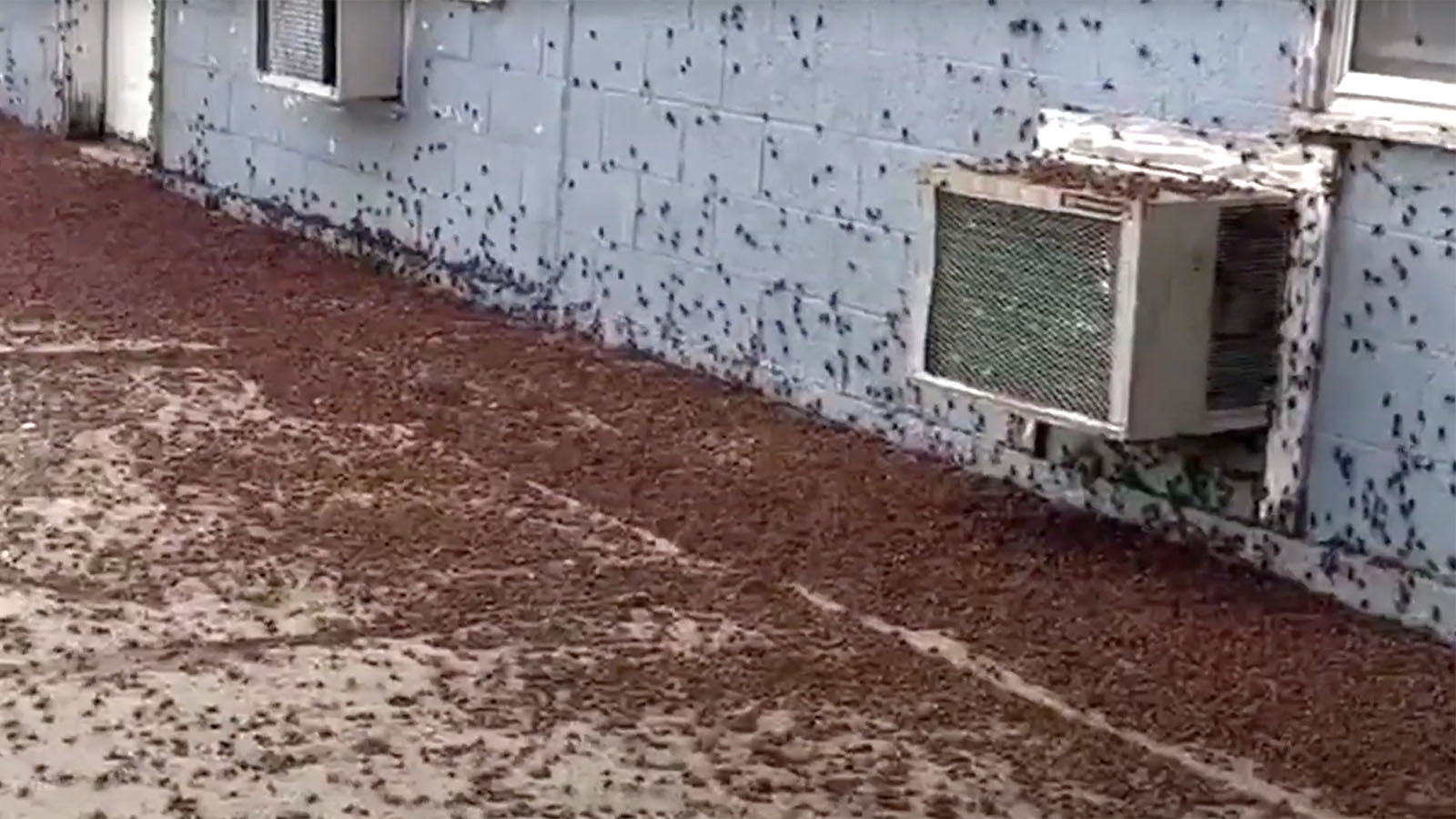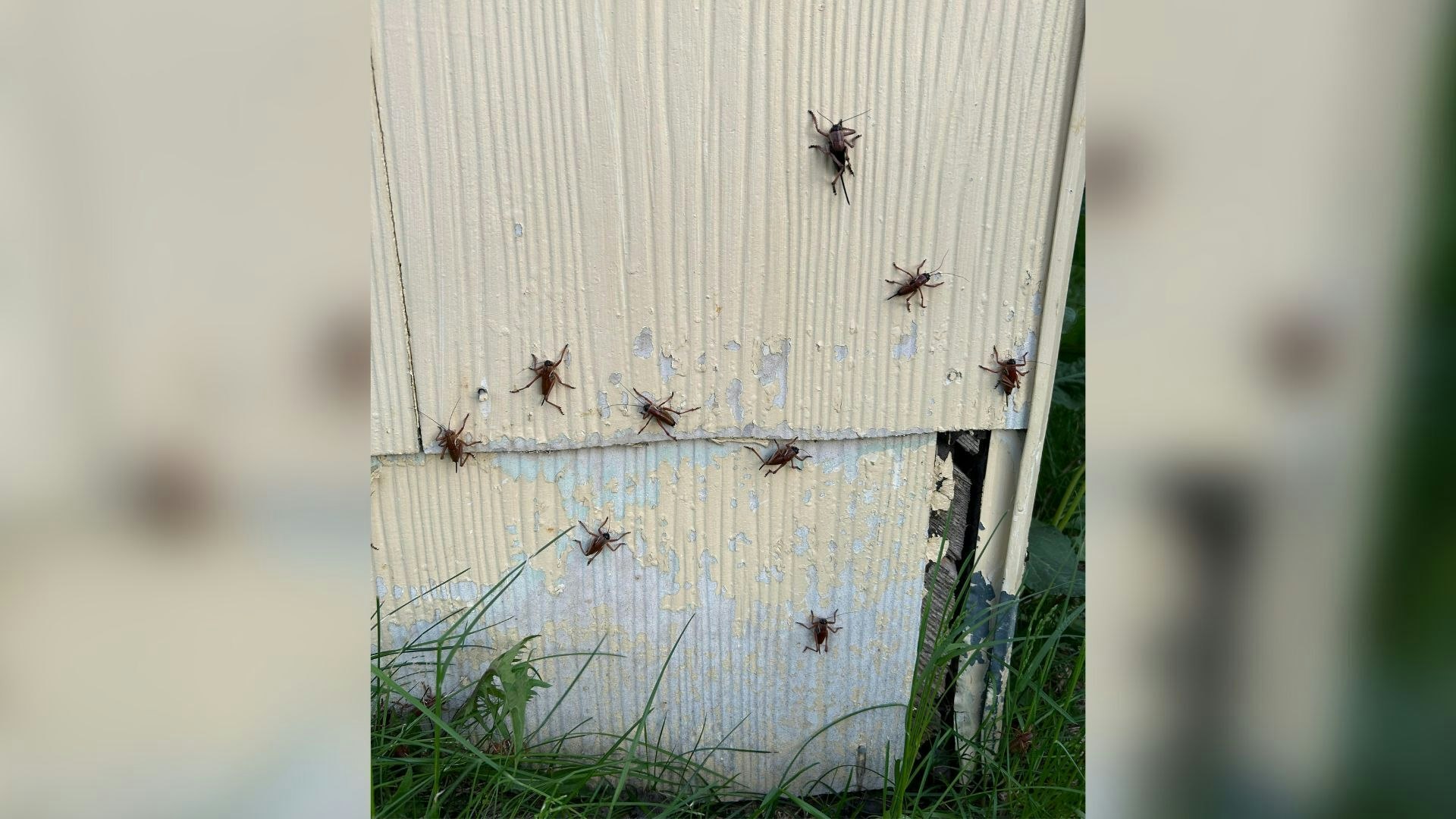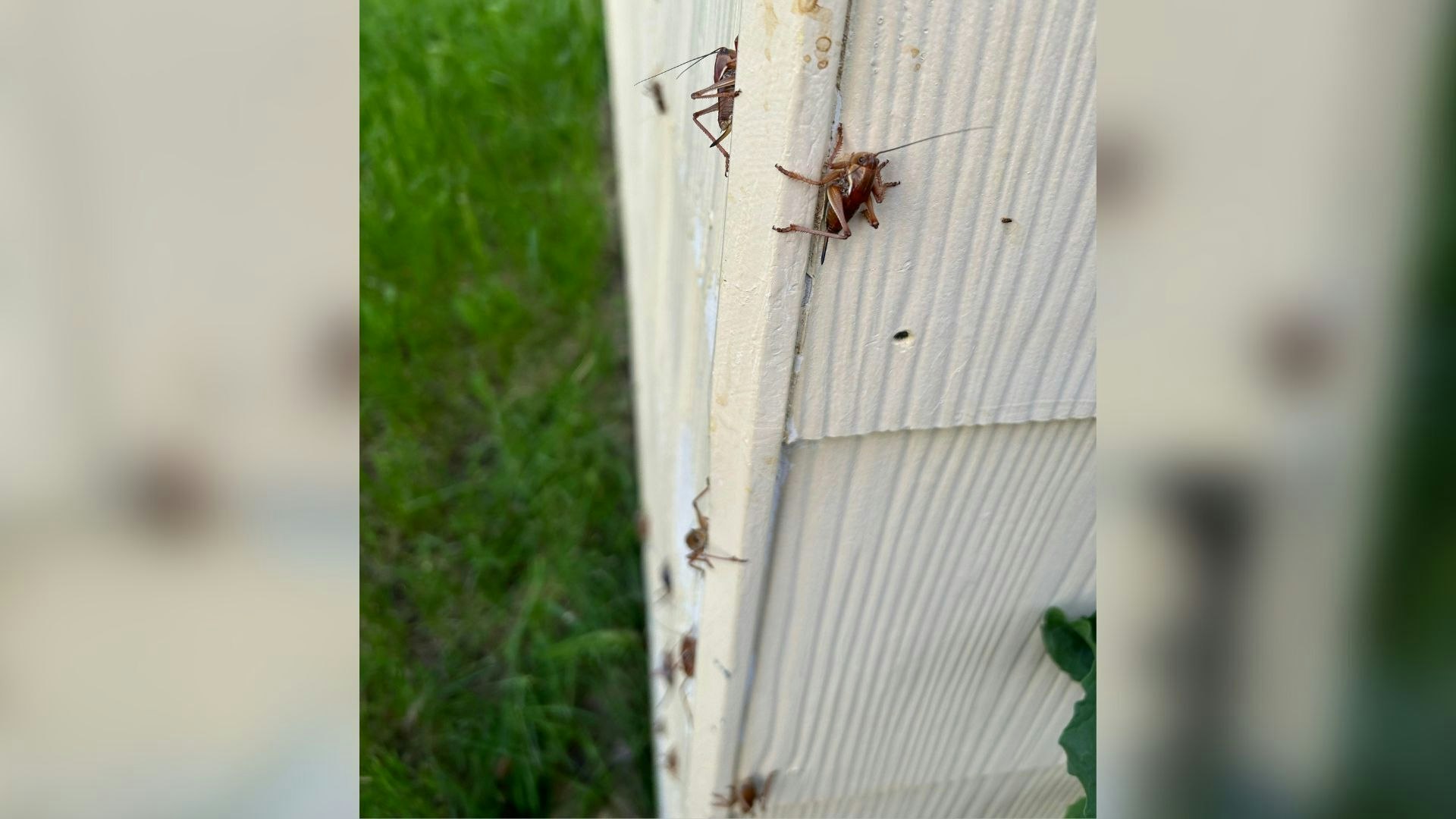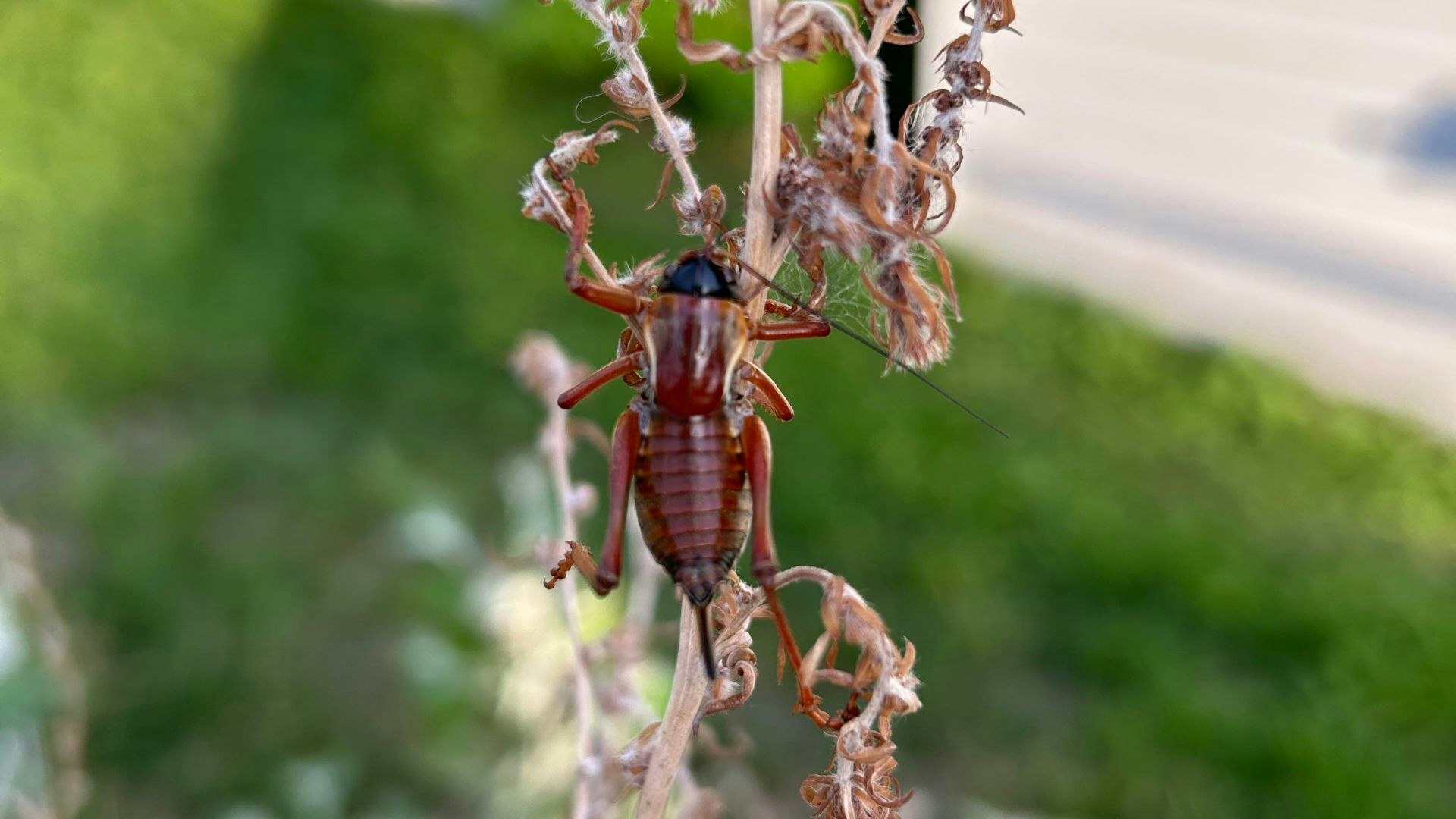It’s like something out of a horror movie — or the Bible.
“It's like flowing red water,” said Ava Blackmore, describing the asphalt road in front of her that appears to be moving. But what’s covering the highway isn’t a liquid.
It’s thousands of crickets.
“When you're driving on them, they sound like pop rockets underneath your car,” Blackmore told Cowboy State Daily. “You know, those little things that people throw on the ground and pop? They sound like that.”
Millions of Mormon crickets (scientific name anabrus simplex) have converged on the tiny town of Edgerton in Natrona County, Wyoming.
The plague-like infestation is something Edgerton Town Clerk Cindy Aars said she’s never seen the like of before.
“We've seen them out on the highway, and usually they just migrate across the highway and go wherever they're going out on the prairie,” said Aars. “But I've been here 20 years, and this is the first time I've ever seen them just covering our streets like they are.”
Blackmore shared the outbreak of insects to the Facebook page “Wyoming Through the Lens,” showing the insects covering the streets in Edgerton.
“They were clinging to the outside of my mom's house, and then she'd go to let the dogs out, and they were falling on top of her,” she said.
‘In Vain They Toiled’
The insects (which technically are shield-backed katydids rather than a true cricket) take their name from Mormon settlers in Utah, who encountered them in 1848 in the Great Salt Lake Basin in Utah, according to a scientific paper from 1929.
The paper records one account of that cricket infestation from the mid-19th century.
“In the latter part of May, when the fields had put on their brightest green, there appeared a visitation in the form of vast swarms of crickets, black and baleful as the locust of the Dead Sea. In their track they left behind them not a blade or leaf, the appearance of the country which they traversed in countless and desolating myriads being that of a land scorched by fire. … Men, women, and children turned out en masse to combat this pest, driving them into ditches or on to piles of reeds, which they would set on fire, striving in every way, until strength was exhausted, to beat back the devouring host. But in vain they toiled.”
Travis Anderson, who works for the town of Edgerton, can relate to the settlers’ struggle. He’s been battling the pests with chemicals in an attempt to control the swarm.
“It’s just miles and miles” of crickets, Anderson told Cowboy State Daily. “There's so many of them coming in, there's not a lot we can do at this point.”

Controlling The Outbreak
Aars said the insects invaded Edgerton early last week, and shortly afterward town officials decided they’d better do something to mitigate the swarm.
“They started moving in a little over a week ago,” she said. “And when it was obvious that they weren’t going to just stay out on the highway, they were coming into town and just covering everything, that was the first time (Anderson) sprayed.”
Anderson said he bought the pest control substance Eco Bran from Natrona County Weed and Pest, and has been spreading it around town since just a couple of days after the insects moved in.
“Eco Bran seems to work really well,” he said. “It's expensive enough. You can't buy a whole bunch of it.”
Even so, Aars admitted it’s so far a losing battle.
“We’re just trying to keep them washed off the sidewalks and stuff,” she said. “There's just really not a lot that we can do except wait for them to get done.”
An Outbreak And Migration
Scott Schell, entomologist with the University of Wyoming, said the swarm is part outbreak, part migration.
“If they were stationary, it would just be an outbreak,” Schell told Cowboy State Daily. “But they tend to move, gathering masses and moving in one direction.”
Schell said the swarms are simply looking for more food.
“When they’re in high populations, they will eat their preferred foods down,” he said. “And then still being hungry, they start to move.”
Schell said the real damage comes when the insects migrate across grasslands and run into agricultural fields.
“In some cases, like out in the mountainous regions of Nevada and Utah and Idaho, the Mormon crickets seem to migrate downhill,” he said. “They'll start up on the foothills regions and migrate down, and when they reach croplands in the lowlands, that's when they cause real issues.”
Anderson and Aars both said they had heard about a Mormon cricket migration that happened in the same area around 25 years ago that was similar in strength.
“About 25-30 years ago, (the outbreak) closed down the road,” said Anderson. “It was out on Highway 387, before the Linch road out there, which is 191, I think. They had to close that down because it was so bad. People were sliding off the road. They had to close it down to get it cleaned up.”
Environmental Factors
Schell said environmental factors, such as a wet spring that encourages the growth of vegetation, may have played a part in this recent outbreak, but so could a phenomenon called “egg-banking.”
“Not all of the eggs that (the insects) deposit one year will hatch the next, and some of them can last for several years,” said Schell. “And so, you might have a population that consists of crickets hatching and eggs that are several years old, along with ones that were laid within the last 12 months.”
Schell said once this outbreak is over, there’s no telling when the next might happen.
“At one point in time, they were fairly consistently happening in parts of Wyoming,” he said. “They're still monitored, but rarely occur here. But it's still pretty frequent in, say, Nevada, Utah and the Great Basin states.”
‘They’re Everywhere’
Blackmore said that drivers along Interstate 25 can catch a glimpse of some of the insects, but it isn’t until you get off the interstate and head toward the town of Midwest that the full impact of the infestation is felt.
“They're just all over along the side (of the road), and when you're driving behind a car you can see them jump to the side when a car comes past them,” she said. “They're all over the side of people's houses — like, they're everywhere.”
Blackmore took video and photos of the insects and shared them with Cowboy State Daily. Her photos show piles of crickets outside an abandoned store in Edgerton, as well as the smeared pavement just outside of town where thousands of the bugs have been run over by vehicles.
“I'm at the intersection right now,” said Blackmore. “I'm trying to turn around, but the road looks like it's red.”
Anderson said he’s been warning residents to be cautious on the streets and highways, as the squished bugs can cause slippery road conditions.
“It’s like driving on ice,” he said. “So, if you're coming around (the corner) and you hit your brakes, you will slide.”
But the tiny menaces aren’t staying outdoors.
“We’ve got dead ones all over the floor where they come in the door,” said Aars. “(Travis) is out here power washing the deck because it's just covered with guts from stepping on them.”
Blackmore said the bugs give her the “heebie-jeebies.”
“They're not aggressive,” said Blackmore. “They're just creepy.”








